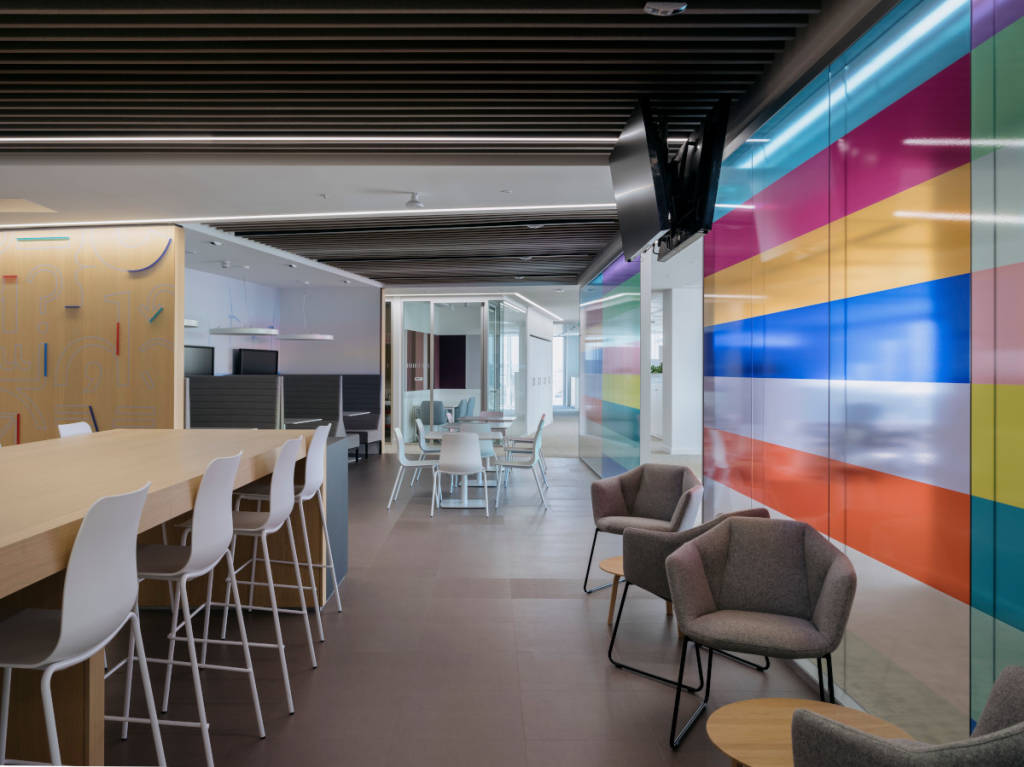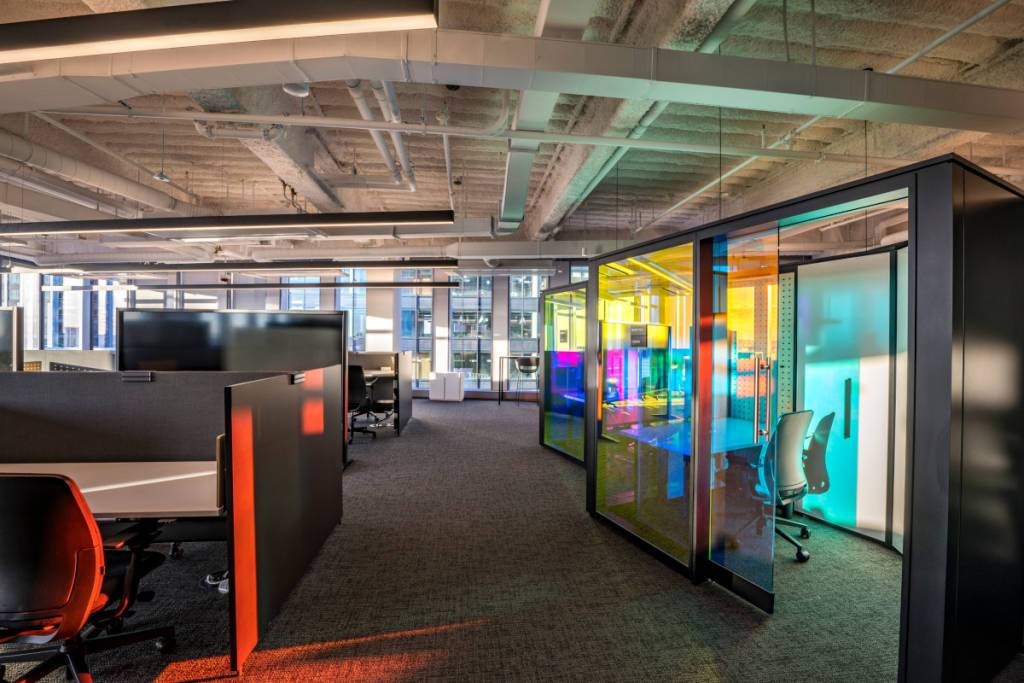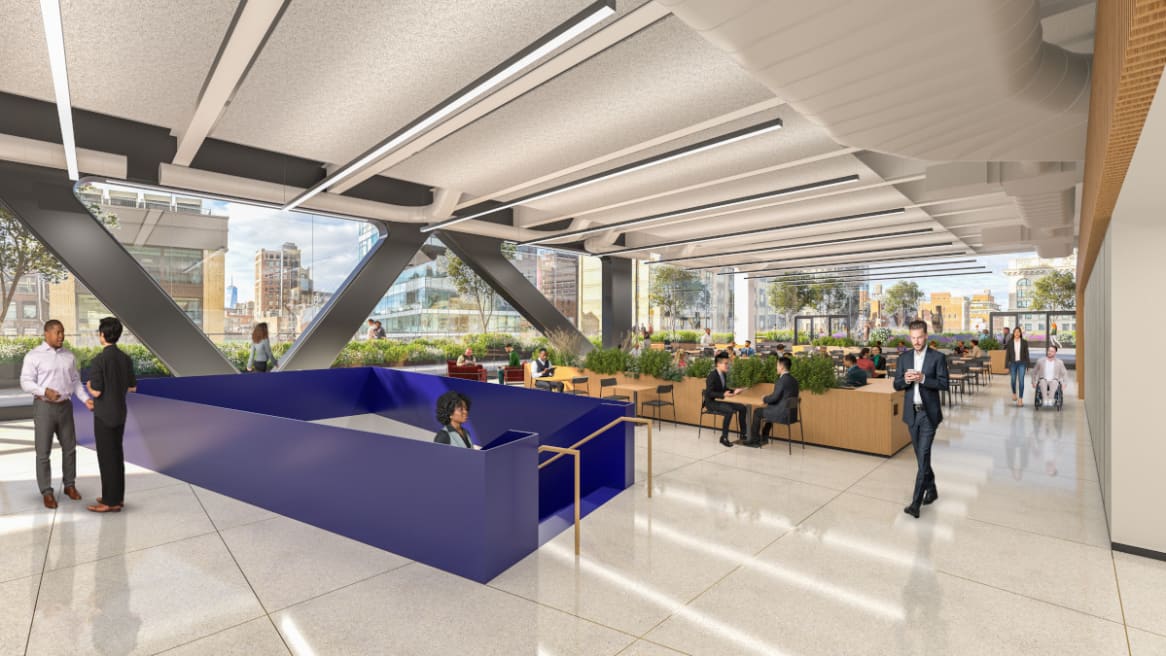IBM: Flexibility Key to the Future of Work
Tech giant emphasizes skills-first, more holistic approach to where + when work happens
Iconic global IT company IBM is known for high-tech, data-driven innovation, so it may be surprising to hear the digital giant is dropping college requirements for half of its positions. It’s also leaning heavily into intentionality about how, when and where work takes place, all in an effort to make its workforce more flexible for the future. Steelcase VP of Workplace Insights Dr. Tracy Brower recently interviewed IBM Chief Human Resources Officer Nickle LaMoreaux about the company’s progressive approach toward the workplace and people management.
Tracy Brower: How has the work experience changed over the last few years?
Nickle LaMoreaux: There has been a fundamental shift going from being fully remote during Covid to being in a more flexible hybrid format now. When we thought about workplace experiences and work styles pre-pandemic, we viewed them as pretty static, based on the individual. We’ve learned work is actually pretty fluid based on the type of work the individual is doing. That also pertains to office spaces – acknowledging that individuals will pass through those different work experiences in the course of a day. There are times when people need collaborative brainstorming on a whiteboard, but then need to find a heads-down space for privacy and deep work. Moments later, they may want to stand up, walk around and meet with people in a communal space. That’s what’s changed in our perspective about the work experience – you’re not offering different experiences so the same people can always use the same spaces – it’s so you can move seamlessly through different experiences in the course of a work day.

TB: How have employee expectations shifted?
NL: As we think about hybrid work, I think where some organizations have it wrong is in mandating where people work, and not following the cadence of the work. It’s the intentionality of saying, “let me explain why we’re coming into the office these days, because this is what the work entails.” So, tying the schedules to the work is an important element of employee expectations. Secondly, being able to be transparent about “why” someone is needed in the office. Those two things go together. I also think there is a third piece that often gets missed. We talk a lot about where work gets done and not enough about when work gets done. Flexibility is not just about place, it’s also about time. When we talk to our employees about flexible work arrangements and what makes sense for their role, they don’t have an issue with that. What they want to know is can we align on core collaboration hours? Establishing those core hours works better for the individual as well as the team. It’s another way organizations can unlock flexibility.
TB: What do you see as the role of HR in the future of work?
NL: Companies are still experimenting with hybrid work – creating mandates, backing off mandates, and everything in between – so while we’re in this experimentation phase HR plays a critical role. One piece is bringing business leaders together to talk about the work and dissecting job roles. This is work design. Many HR professionals spend a lot of time in organizational design and not deeply enough in work design – pulling jobs apart. What are the tasks being done? When should they be done together? When should they be done remotely?
Another piece is helping hybrid teams establish norms. As we’re running these experiments, what you’re finding, particularly in large organizations, is that it isn’t a one-size-fits-all answer. It is team-dependent, and no two teams may look exactly the same. At a more strategic level, our role is making sure we are continuing to evolve and influence intentionality. We need to watch trends and see if any principles or guidelines need to be updated. Ultimately, HR needs to help the organization deal with the here-and-now, but also move them through all these evolutions.

TB: What key business issues are influencing your top priorities?
NL: Two macro trends are influencing our talent priorities. First, jobs are changing because of digitization and AI in the workplace. This technology is impacting every job and organizations should be asking how they are preparing their workforce – not only for the changes happening now, but years in the future. This is causing us to focus on our skills-first strategy – dissecting a job down to the skills needed to do the job today and in the future. It used to be that you could gain a set of skills at a university that would carry you for a 30-year career. The skills needed to perform jobs now are evolving at a rate and pace unlike anything we’ve seen before. Companies and employees have to adopt a continuous learning journey as part of their talent plan.
That leads to the second priority – a huge talent shortage. The demand, particularly for technology or STEM-related jobs, is significantly outpacing the supply. We’re seeing estimates of shortages in the hundreds of thousands or even millions. For us, it’s not only working with colleges and universities to increase the supply, but also taking a unique approach to how we hire. Roughly 60% of Americans over 25 do not have a college degree. If companies – particularly those looking for technology skills – require a college degree, they are dramatically shrinking a pool that is already not big enough. That’s why we’ve taken a skills-first approach and removed the college degree requirement for 50% of our currently open jobs in the United States. Today, many Americans in particular are learning skills in untraditional ways through non-traditional channels. So, if I need a candidate with Python skills on our software team, it doesn’t matter to me if you learned that skill in a university, if you took a boot camp or if you taught yourself online overnight.

TB: Given changes in employee expectations and how you are focusing on the future of work, how does ‘place’ play a role in that?
NL: The workplace is simply a place where the work gets done. For us, this isn’t a revolution, but more of an evolution. Before the pandemic, we had large percentages of IBM’ers taking advantage of our work-from-home flexibility. The shift happening now is that the ‘place’ dynamic is becoming a little less about individual preferences. When we had flexibility before it was about staying home because someone was expecting a delivery or someone had an appointment. Now we’re going back to intentionality. It’s flexibility based on the work, team norms and maybe still some element based on individual preferences.
TB: What activities do you believe are best done in person?
NL: Collaboration, general brainstorming and some learning is best done face-to-face. There is some apprenticeship learning and hands-on learning that happens best in person. However, it goes back to intentionality. What used to happen all in one meeting pre-pandemic can now maybe happen in three different places. If you’re just reviewing information, that may not require a meeting at all – perhaps it can be done in a collaborative digital tool where everyone can view the data. Then, if you need to talk about a game plan going forward with that data, then maybe it’s a virtual call. And then you move into deep problem solving – if you need to diagram something on a whiteboard or visually within the space, maybe that’s best done face to face. It’s about deconstructing what’s actually happening on that team that I think is critical as we think about place moving forward

Nickle Lamoreaux leads IBM’s people strategy, skills, employee experience and services, and global HR team supporting more than 250,000 IBMers across 170 countries. In her 20 years at IBM, Nickle has led HR across organizations ranging from services to software to emerging markets – supporting the company’s business growth through leadership development, talent acquisition, performance management and skill building.
Inside Steelcase + IBM’s Flexible Hybrid Workplaces
Join IBM and Steelcase for the latest global research, design ideas and inspiration for a more flexible workplace designed for hybrid work.


